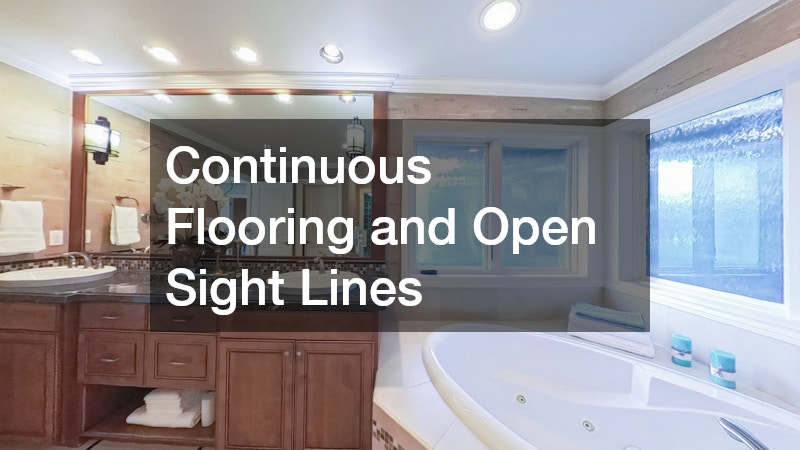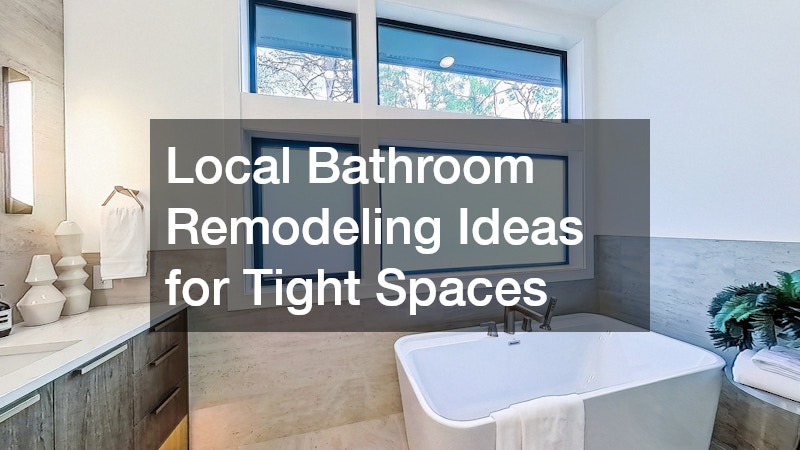Remodeling a small bathroom can often seem like a daunting task due to the limited space and the need for creative solutions. However, with the rise in demand for urban living in compact settings, local trends are leaning towards innovative designs that make even the smallest of bathrooms functional and stylish. Accessible solutions are becoming more prevalent, offering homeowners an opportunity to transform their constrained spaces into efficient and enjoyable areas.
Maximizing Space in Your Small Bathroom
Utilizing Vertical Space
Vertical space is an often overlooked area when remodeling a small bathroom, yet it offers significant potential for storage and design. High cabinets that extend to the ceiling can provide ample storage without occupying valuable floor space.
Additionally, incorporating open shelving or over-toilet storage units can further maximize the vertical dimension, creating a more spacious environment.
Incorporating vertical elements not only adds storage but also draws the eye upwards, giving the illusion of a taller room. Local designers emphasize the importance of using lightweight materials and open shelves to maintain an airy feel. This approach prevents the space from feeling cramped, ensuring that every inch is utilized effectively.
By prioritizing vertical space, homeowners can keep their essential items accessible while maintaining a clutter-free floor. This results in a more streamlined bathroom that is both functional and aesthetically pleasing. Local retailers offer a range of vertical storage options, from sleek modern designs to rustic wooden finishes, catering to diverse style preferences.
Compact Fixtures and Efficient Layouts
Compact fixtures are crucial for local bathroom remodeling where space is at a premium. Features like corner sinks and wall-mounted toilets can free up floor area, allowing for easier movement and a more open feel. Additionally, optimizing the layout for flow and accessibility is essential in making the most out of tight spaces.
Local trends emphasize the use of smart layouts that minimize wasted space and enhance functionality. Approaches include placing fixtures along a single wall to simplify plumbing and streamline the design. Another approach is to use sliding doors instead of traditional swinging ones, reducing the space required for doors to open.
The choice of compact fixtures can have a significant impact on both aesthetics and usability. In addition to functionality, it is important to consider the style and finish of these fixtures to ensure they complement the overall design of the bathroom. Retailers often offer diverse selections, from modern chrome to vintage-inspired faucets, making it easy to find pieces that suit different tastes.
Smart Storage Solutions for Small Bathrooms
Built-in and Hidden Storage
Smart storage solutions are a necessity in small bathrooms, where space is limited but functionality is crucial. One effective strategy is to use built-in and hidden storage options, like recessed cabinets that seamlessly integrate into walls. Such features not only save space but also contribute to a streamlined and clutter-free appearance.
Hidden wall niches are another popular choice, ideal for storing toiletries and other essentials without taking up additional room. These niches can be strategically placed in shower walls or near vanities, keeping items within reach while maintaining a clean, minimalist look. Local designers recommend this approach for its ability to blend utility with design.
Multi-functional Furniture
In a small bathroom, every piece of furniture should serve more than one function whenever possible. Multi-functional furniture, like vanities with additional shelving or storage, can greatly enhance the usability of the space. Mirrored cabinets also serve dual purposes, offering both reflective surfaces and storage for essentials.
Fold-down benches or tables are another innovative solution, especially beneficial for those who desire flexibility in bathroom functionality. These pieces can provide seating or additional surface space when needed, then fold away neatly when not in use. Having such options caters to the dynamic needs of modern living, where adaptability is key.
Making Your Small Bathroom Feel More Spacious
Light and Color Techniques
Light and color play critical roles in making small bathrooms feel larger than they are. Light colors, such as whites, pastels, and neutrals, reflect light, naturally enhancing the perception of space. Strategic lighting complements these colors, illuminating shadowy areas and expanding the room’s visual boundaries.
Mirrors amplify these effects by reflecting both light and space, creating the illusion of a larger area. Placing a large mirror over the sink or more mirrors opposite windows can double their impact, harnessing natural light to emphasize openness. This approach is a staple in local design trends, where making the most of limited space is essential.
Continuous Flooring and Open Sight Lines
Continuous flooring is a powerful design tool that helps create a unified and expansive appearance in confined areas. By using the same flooring material throughout the bathroom, homeowners can create a seamless look that minimizes visual disruptions. This technique ensures that the eye flows smoothly from one end of the bathroom to the other, making the space appear larger.
Open sight lines are equally important in conveying a sense of spaciousness. Avoiding unnecessary partitions and bulky furniture can keep views unobstructed, enhancing the feeling of openness. Glass shower enclosures are particularly effective at maintaining sight lines while providing functional shower space without the visual barriers of traditional shower curtains.
Renovating a small bathroom requires careful consideration of available space, existing fixtures, and functional needs. By employing strategies such as maximizing vertical space, selecting compact and multi-functional fixtures, and utilizing thoughtful color and lighting techniques, homeowners can transform tight bathrooms into versatile and stylish spaces. Embracing local trends and solutions provides an opportunity to incorporate contemporary and practical designs that make the most of every square inch.




